The reaction which is in dynamic equilibrium, ensured us, that the reaction is reversible . But if that the reaction is in equilibrium. The reaction quotient predict either the reversible reaction is in equilibrium or tries to achieve equilibrium. In those reactions which have not achieved equilibrium, we obtain reaction quotient Qc in place of equilibrium constant (Kc) by substituting the concentration of reactant and product at the time, at whih we have to calculate the value of Qc . To determine the direction at which the net reaction will proceed to achieve equilibrium, we compare values of Qc and Kc. The three possible cases are shown as comparison of Kc and Qc in the following figures.
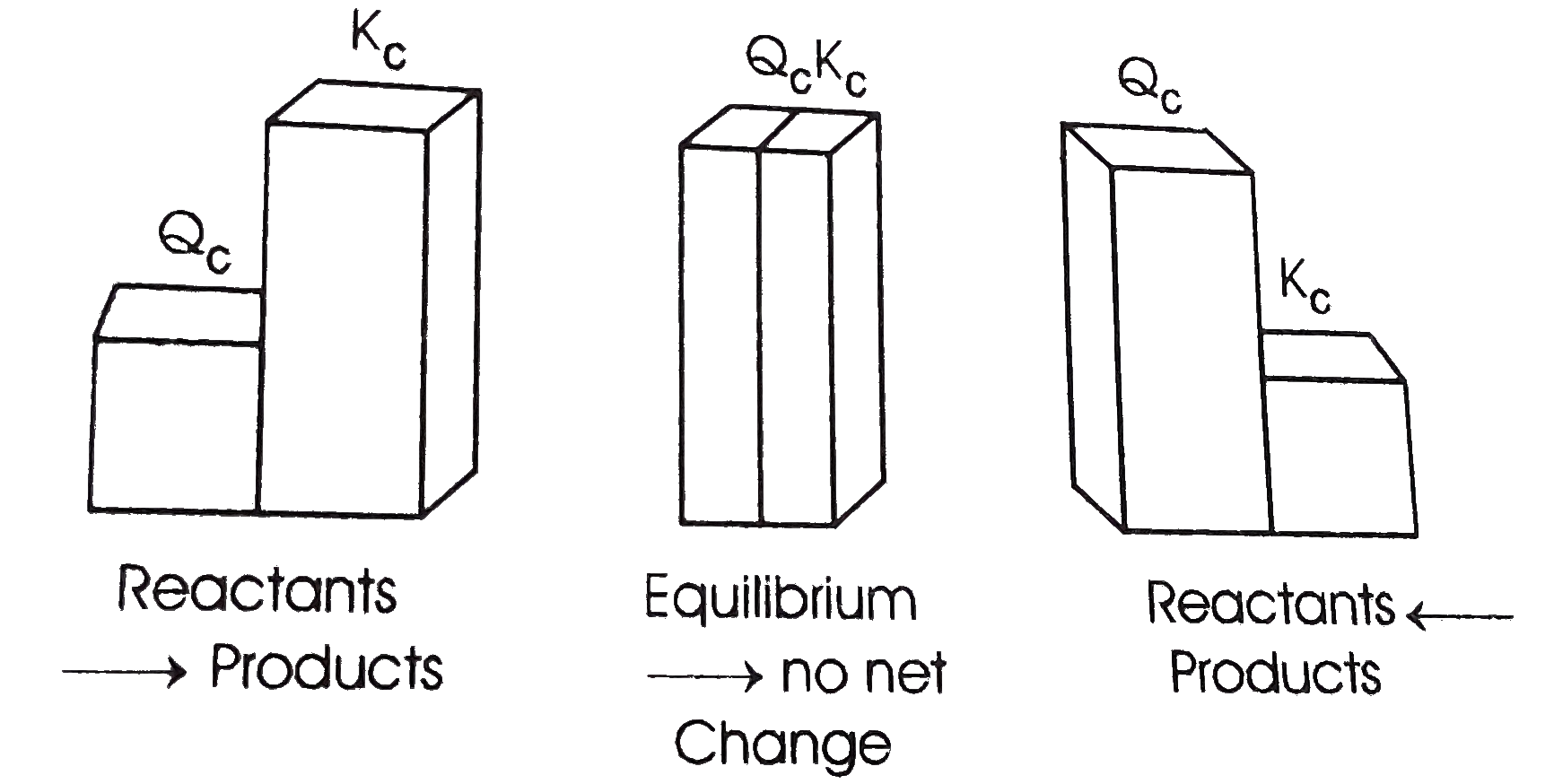
Change in Gibbs free energy, i.e., ΔG is the driving force of any reaction.
For spontaneous reaction , ΔG=−ve
For non-spontaneous reaction , ΔG=+ve
For reaction at equilibrium , ΔG=0
Thermodynamically, we know that
ΔG=ΔG∘+RTlnQ, where Q is reaction quotient and ΔG∘= change in Gibbs energy at standard condition.
For equilibrium A(g)⇔B(g)(Keq=1.732) If the pressure of the system [varied by introducing a stream of A(g) and B (g) is represented by the curve at constant temperature T.
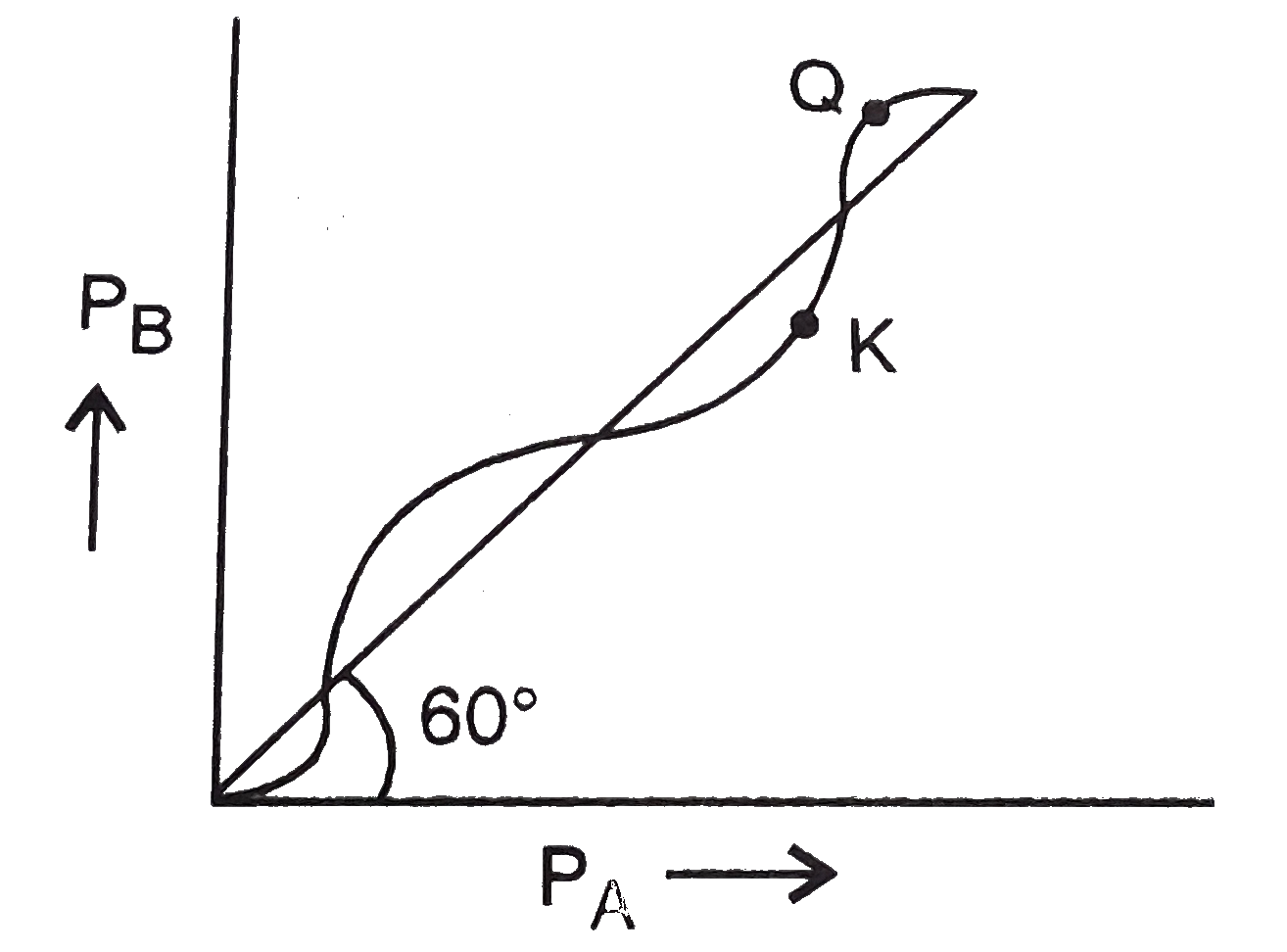
For the equilibrium
n Butane (g)⇔ Isobutane (g),(Keq=1.732) If the pressure of the system (varied by introducing a stream of n butane and isobutane ) is represented by the curve at constant temperature T.
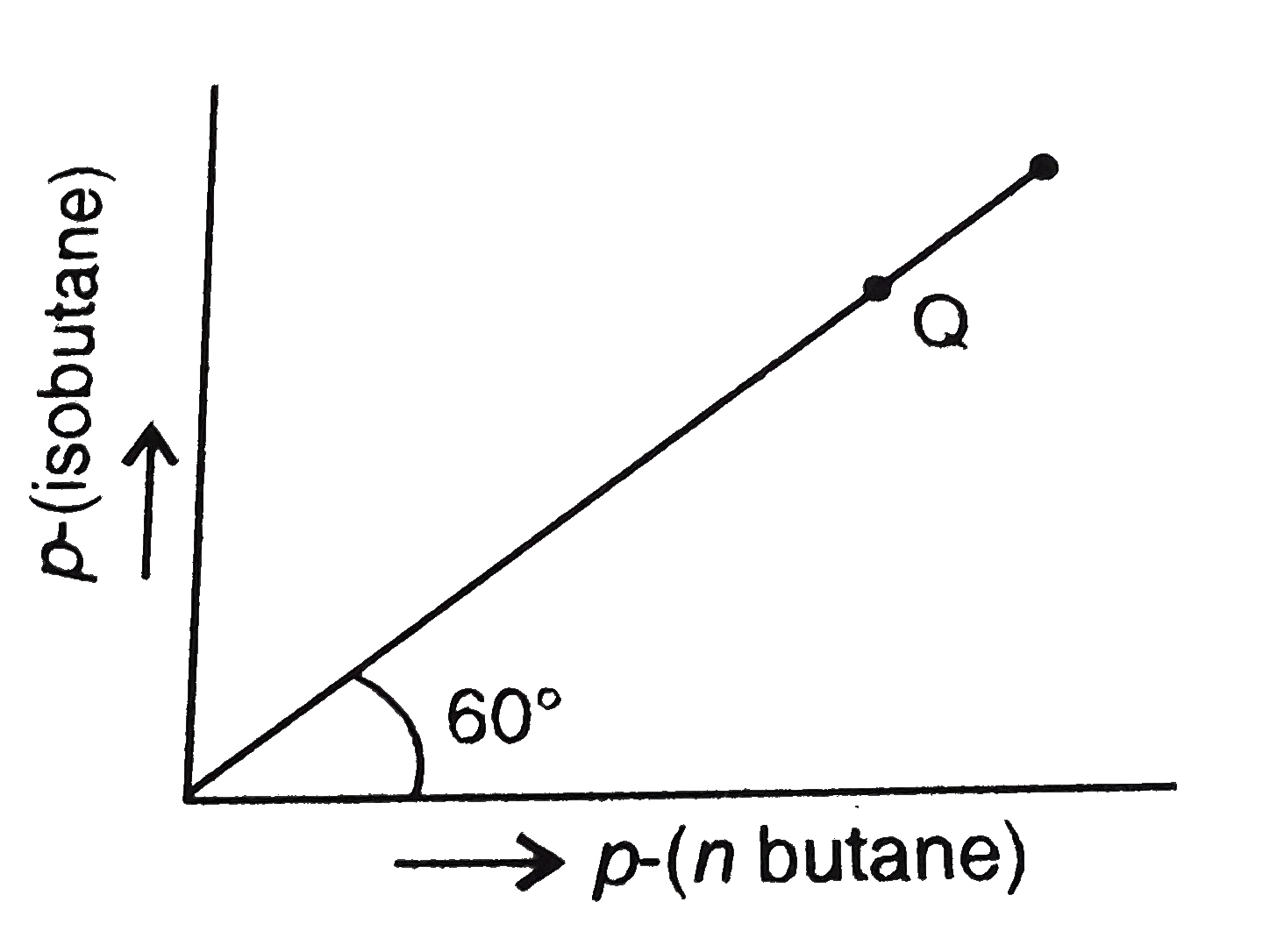
At a particular point Q, which of the following statements holds good ?
The reaction moves in the backward direction.
The reaction movess in the forward direction.
The reaction is at equilibrium .
The data is insufficient to prodict
The correct Answer is:C
Topper's Solved these Questions
- PHYSICAL AND CHEMICAL EQUILIBRIABOOK - DINESH PUBLICATIONCHAPTER - PHYSICAL AND CHEMICAL EQUILIBRIAEXERCISE - MATRIX MATCH TYPE MCQs
2 Videos
- PHYSICAL AND CHEMICAL EQUILIBRIABOOK - DINESH PUBLICATIONCHAPTER - PHYSICAL AND CHEMICAL EQUILIBRIAEXERCISE - REASON ASSERTION TYPE MCQs
10 Videos
- PHYSICAL AND CHEMICAL EQUILIBRIABOOK - DINESH PUBLICATIONCHAPTER - PHYSICAL AND CHEMICAL EQUILIBRIAEXERCISE - MCQs with only one correct answer
24 Videos
- P BLOCK ELEMENTS (GROUP 13 AND 14 )BOOK - DINESH PUBLICATIONCHAPTER - P BLOCK ELEMENTS (GROUP 13 AND 14 )EXERCISE - Straight obj.
17 Videos
- RATES OF REACTIONS AND CHEMICAL KINETICSBOOK - DINESH PUBLICATIONCHAPTER - RATES OF REACTIONS AND CHEMICAL KINETICSEXERCISE - Ultimate Preparatory Package
29 Videos
Similar Questions
At equilibrium the reaction quotient is greater than equilibrium constant.
View SolutionThe reaction which is in dynamic equilibrium, ensured us, that the reaction is reversible . But if that the reaction is in equilibrium. The reaction quotient predict either the reversible reaction is in equilibrium or tries to achieve equilibrium. In those reactions which have not achieved equilibrium, we obtain reaction quotient Qc in place of equilibrium constant (Kc) by substituting the concentration of reactant and product at the time, at whih we have to calculate the value of Qc . To determine the direction at which the net reaction will proceed to achieve equilibrium, we compare values of Qc and Kc. The three possible cases are shown as comparison of Kc and Qc in the following figures.
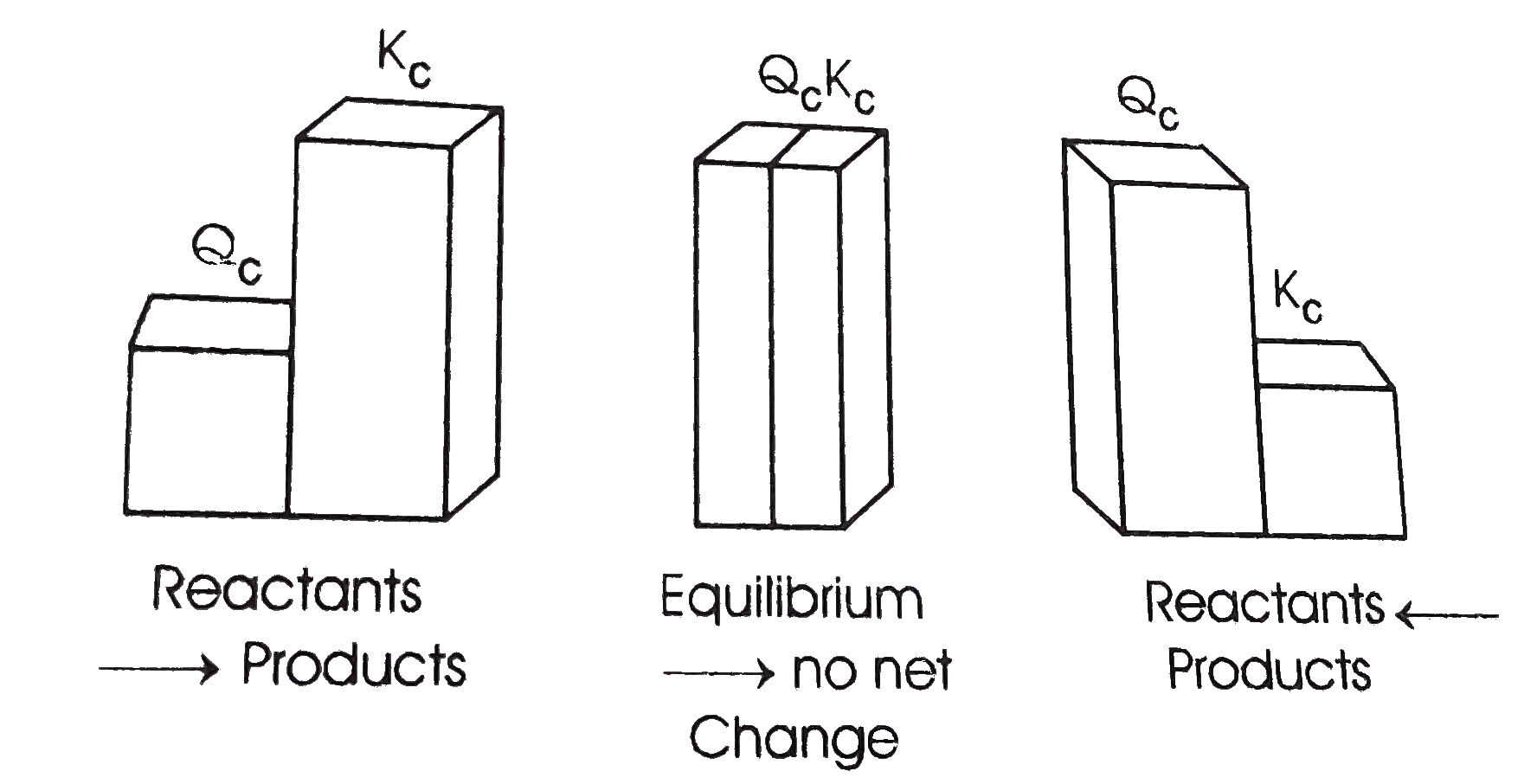
Change in Gibbs free energy, i.e., ΔG is the driving force of any reaction.
For spontaneous reaction , ΔG=−ve
For non-spontaneous reaction , ΔG=+ve
For reaction at equilibrium , ΔG=0
Thermodynamically, we know that
ΔG=ΔG∘+RTlnQ, where Q is reaction quotient and ΔG∘= change in Gibbs energy at standard condition.
For equilibrium A(g)⇔B(g)(Keq=1.732) If the pressure of the system [varied by introducing a stream of A(g) and B (g) is represented by the curve at constant temperature T.
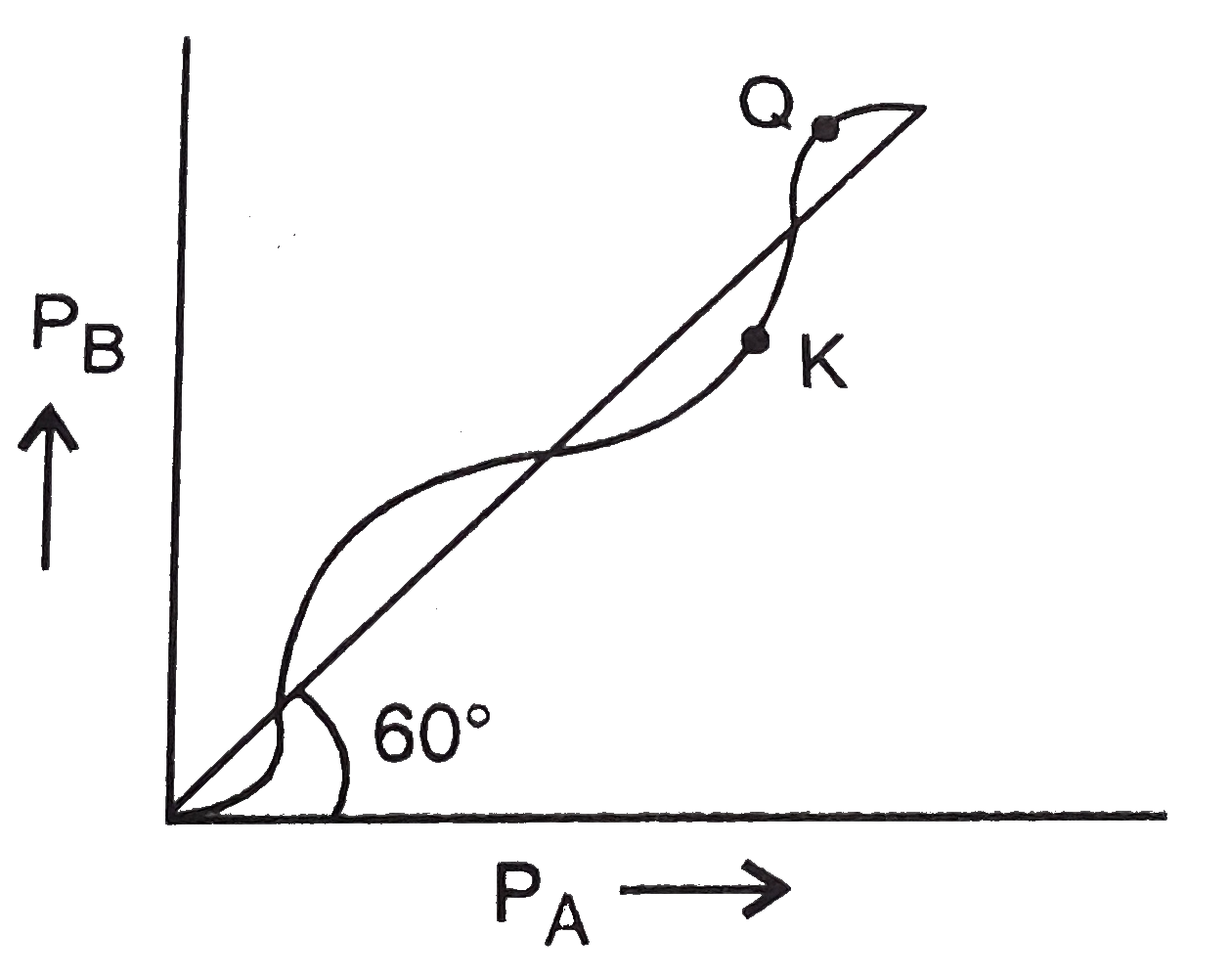
If A and B are enclosed in the cylinder and piston of the cylinder be moved downward so that volume of cylinder becomes half, then what will be the effect in Kc at constant temeprature ?
View Solution
Knowledge Check
The reaction which is in dynamic equilibrium, ensured us, that the reaction is reversible . But if that the reaction is in equilibrium. The reaction quotient predict either the reversible reaction is in equilibrium or tries to achieve equilibrium. In those reactions which have not achieved equilibrium, we obtain reaction quotient Qc in place of equilibrium constant (Kc) by substituting the concentration of reactant and product at the time, at whih we have to calculate the value of Qc . To determine the direction at which the net reaction will proceed to achieve equilibrium, we compare values of Qc and Kc. The three possible cases are shown as comparison of Kc and Qc in the following figures.
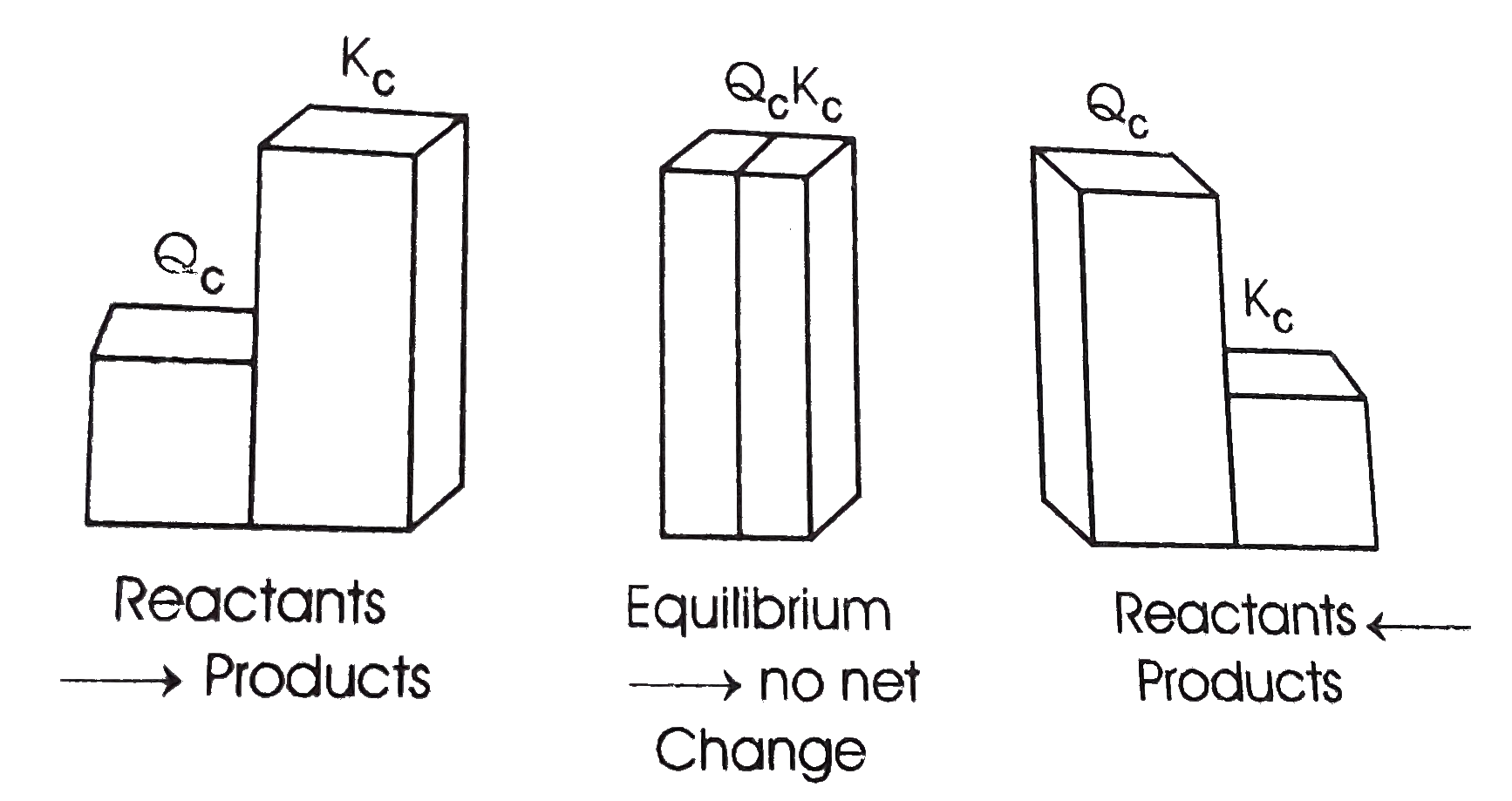
Change in Gibbs free energy, i.e., ΔG is the driving force of any reaction.
For spontaneous reaction , ΔG=−ve
For non-spontaneous reaction , ΔG=+ve
For reaction at equilibrium , ΔG=0
Thermodynamically, we know that
ΔG=ΔG∘+RTlnQ, where Q is reaction quotient and ΔG∘= change in Gibbs energy at standard condition.
For equilibrium A(g)⇔B(g)(Keq=1.732) If the pressure of the system [varied by introducing a stream of A(g) and B (g) is represented by the curve at constant temperature T.
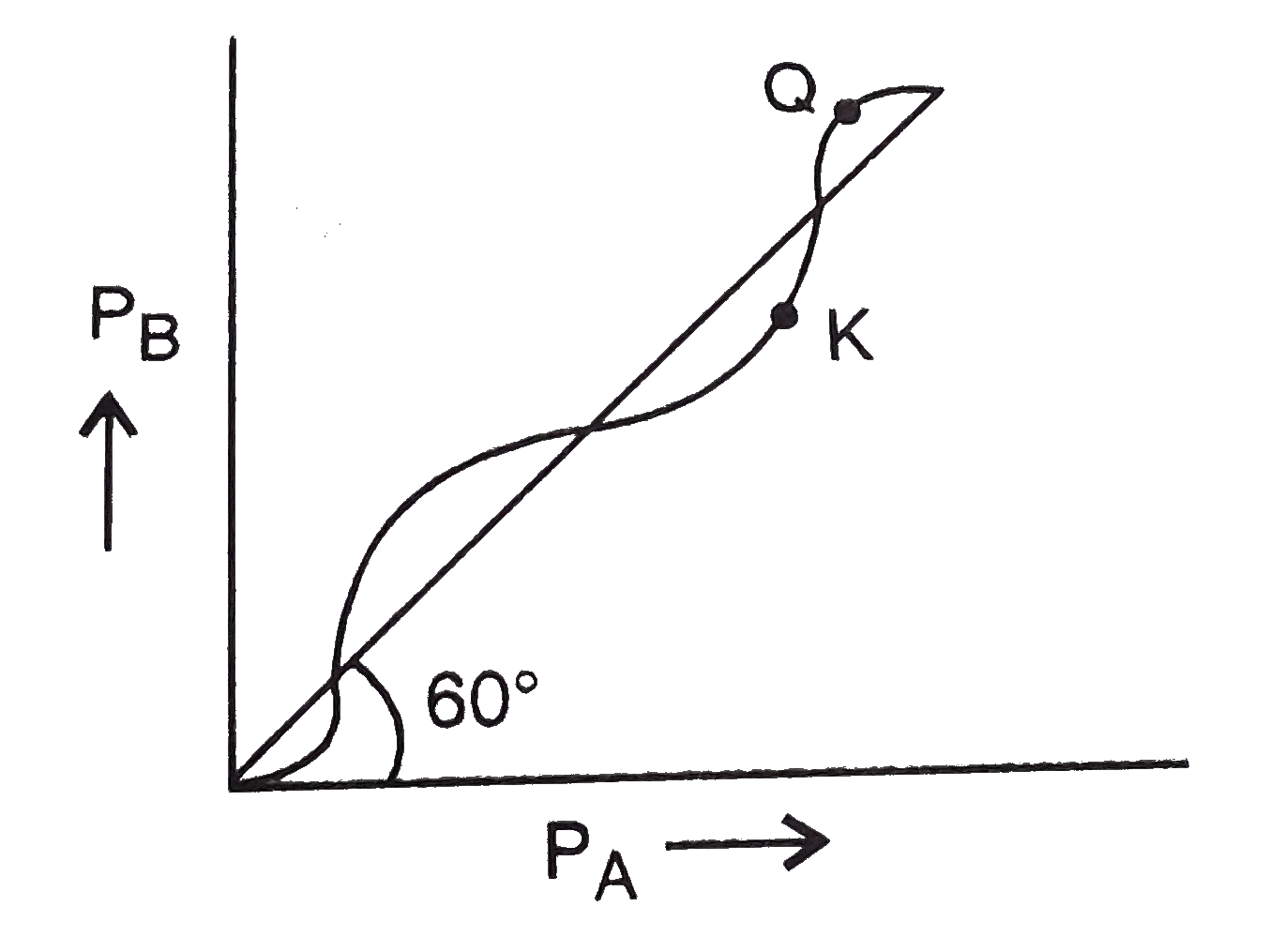
Which of the following is the correct statement at point R in the figure above ?AThe reaction will move in backward direction in order to gain equilibriumBThe reaction will move in forward direction in order to gain equilibriumCΔG of the reaction will be zeroDCannotbe predicted.The reaction which is in dynamic equilibrium, ensured us, that the reaction is reversible . But if that the reaction is in equilibrium. The reaction quotient predict either the reversible reaction is in equilibrium or tries to achieve equilibrium. In those reactions which have not achieved equilibrium, we obtain reaction quotient Qc in place of equilibrium constant (Kc) by substituting the concentration of reactant and product at the time, at whih we have to calculate the value of Qc . To determine the direction at which the net reaction will proceed to achieve equilibrium, we compare values of Qc and Kc. The three possible cases are shown as comparison of Kc and Qc in the following figures.
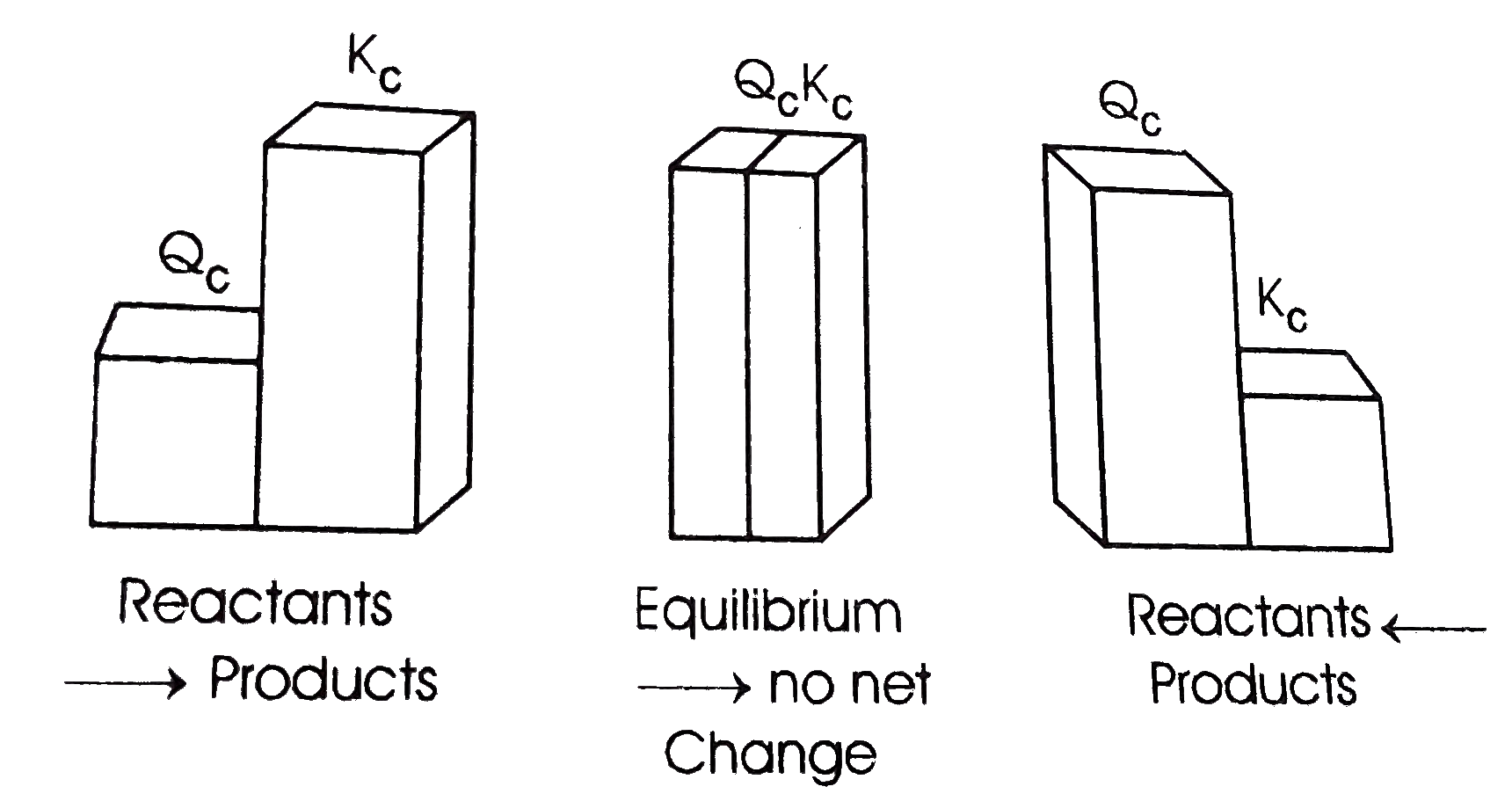
Change in Gibbs free energy, i.e., ΔG is the driving force of any reaction.
For spontaneous reaction , ΔG=−ve
For non-spontaneous reaction , ΔG=+ve
For reaction at equilibrium , ΔG=0
Thermodynamically, we know that
ΔG=ΔG∘+RTlnQ, where Q is reaction quotient and ΔG∘= change in Gibbs energy at standard condition.
For equilibrium A(g)⇔B(g)(Keq=1.732) If the pressure of the system [varied by introducing a stream of A(g) and B (g) is represented by the curve at constant temperature T.
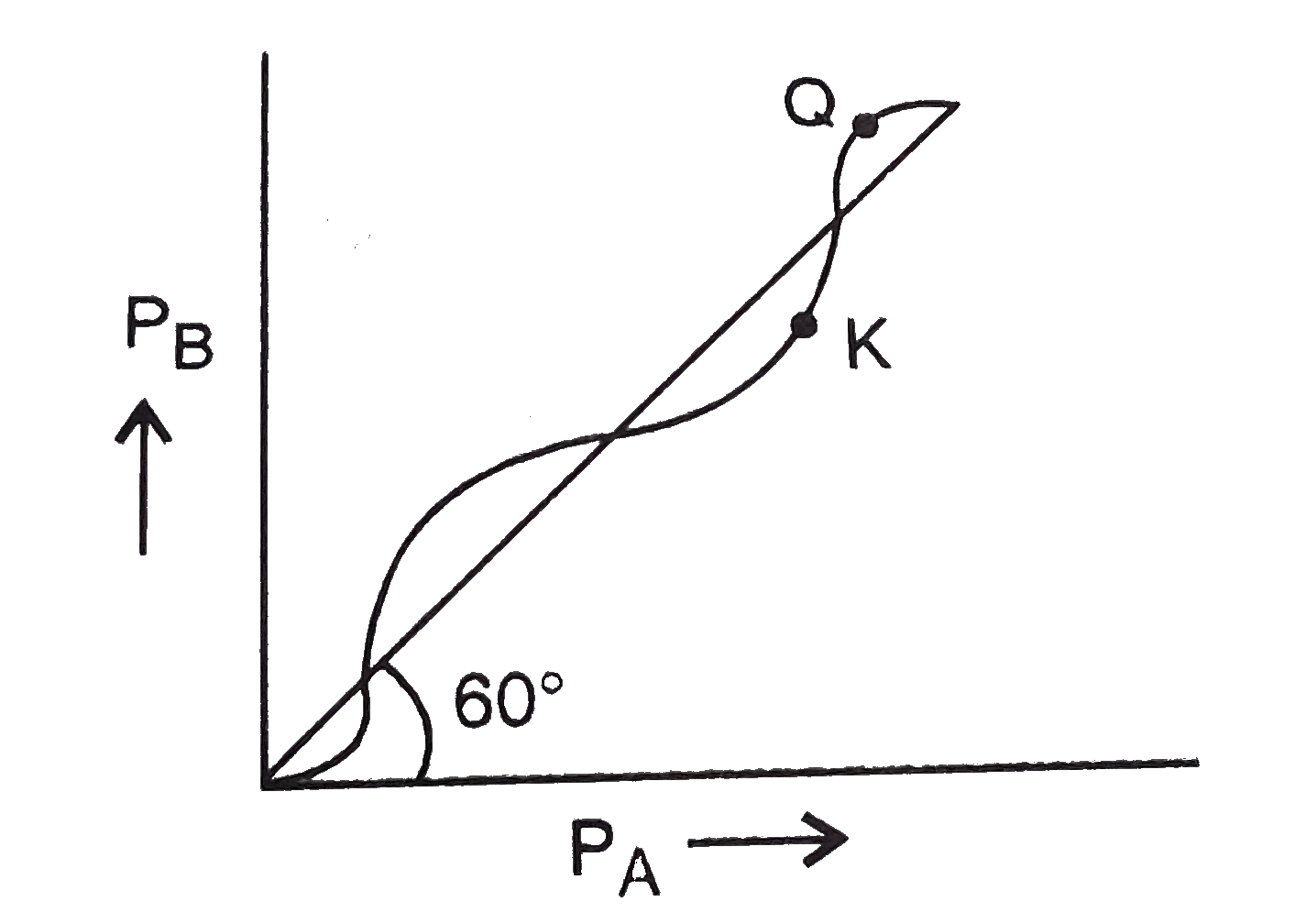
What will be the value of difference of standard Gibbs free energy to Gibbs free energy change at point Q in the figure above ?A−veB+veC0Dcannot be predictedThe reaction which is in dynamic equilibrium, ensured us, that the reaction is reversible . But if that the reaction is in equilibrium. The reaction quotient predict either the reversible reaction is in equilibrium or tries to achieve equilibrium. In those reactions which have not achieved equilibrium, we obtain reaction quotient Qc in place of equilibrium constant (Kc) by substituting the concentration of reactant and product at the time, at whih we have to calculate the value of Qc . To determine the direction at which the net reaction will proceed to achieve equilibrium, we compare values of Qc and Kc. The three possible cases are shown as comparison of Kc and Qc in the following figures.
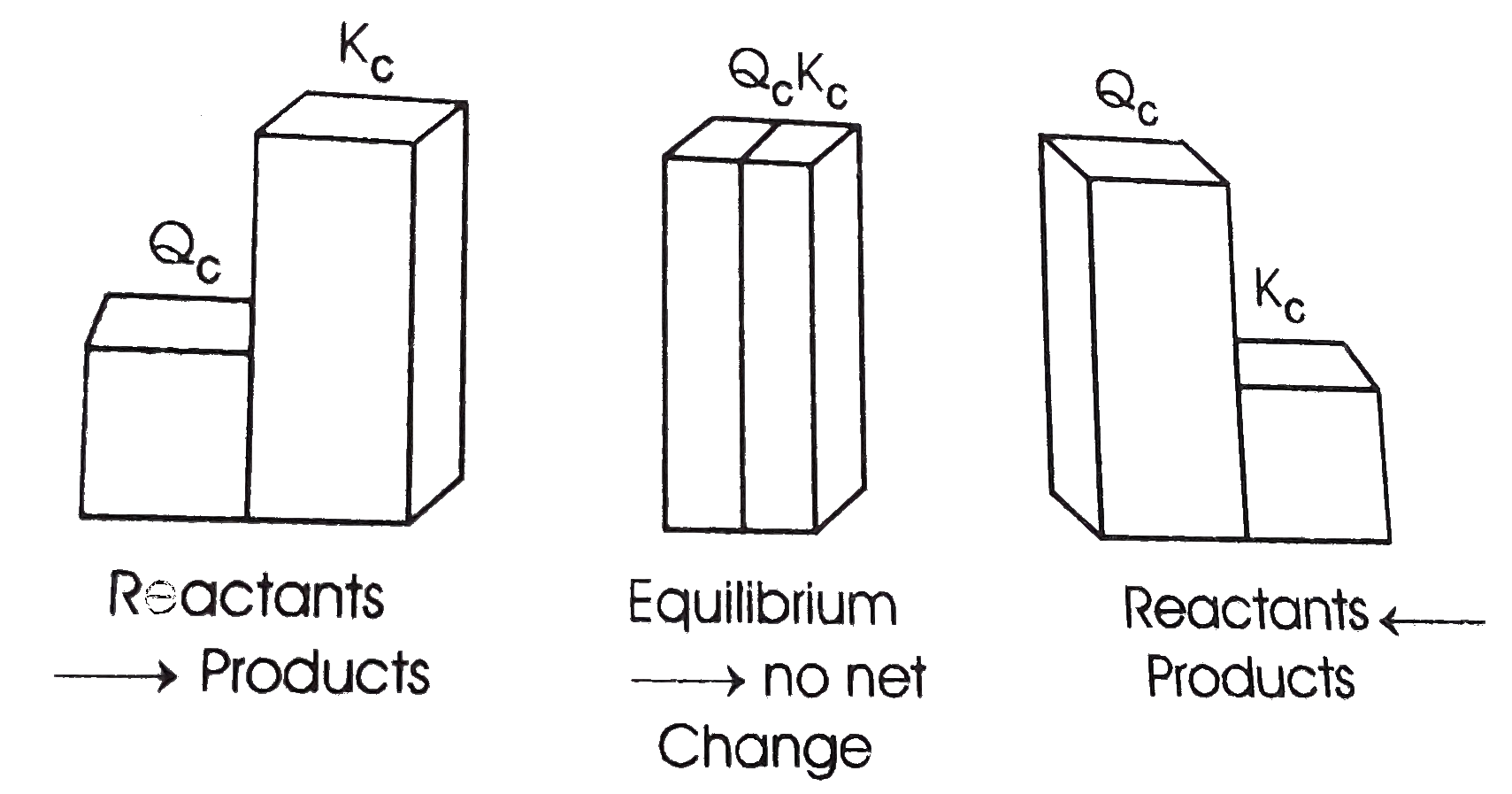
Change in Gibbs free energy, i.e., ΔG is the driving force of any reaction.
For spontaneous reaction , ΔG=−ve
For non-spontaneous reaction , ΔG=+ve
For reaction at equilibrium , ΔG=0
Thermodynamically, we know that
ΔG=ΔG∘+RTlnQ, where Q is reaction quotient and ΔG∘= change in Gibbs energy at standard condition.
For equilibrium A(g)⇔B(g)(Keq=1.732) If the pressure of the system [varied by introducing a stream of A(g) and B (g) is represented by the curve at constant temperature T.
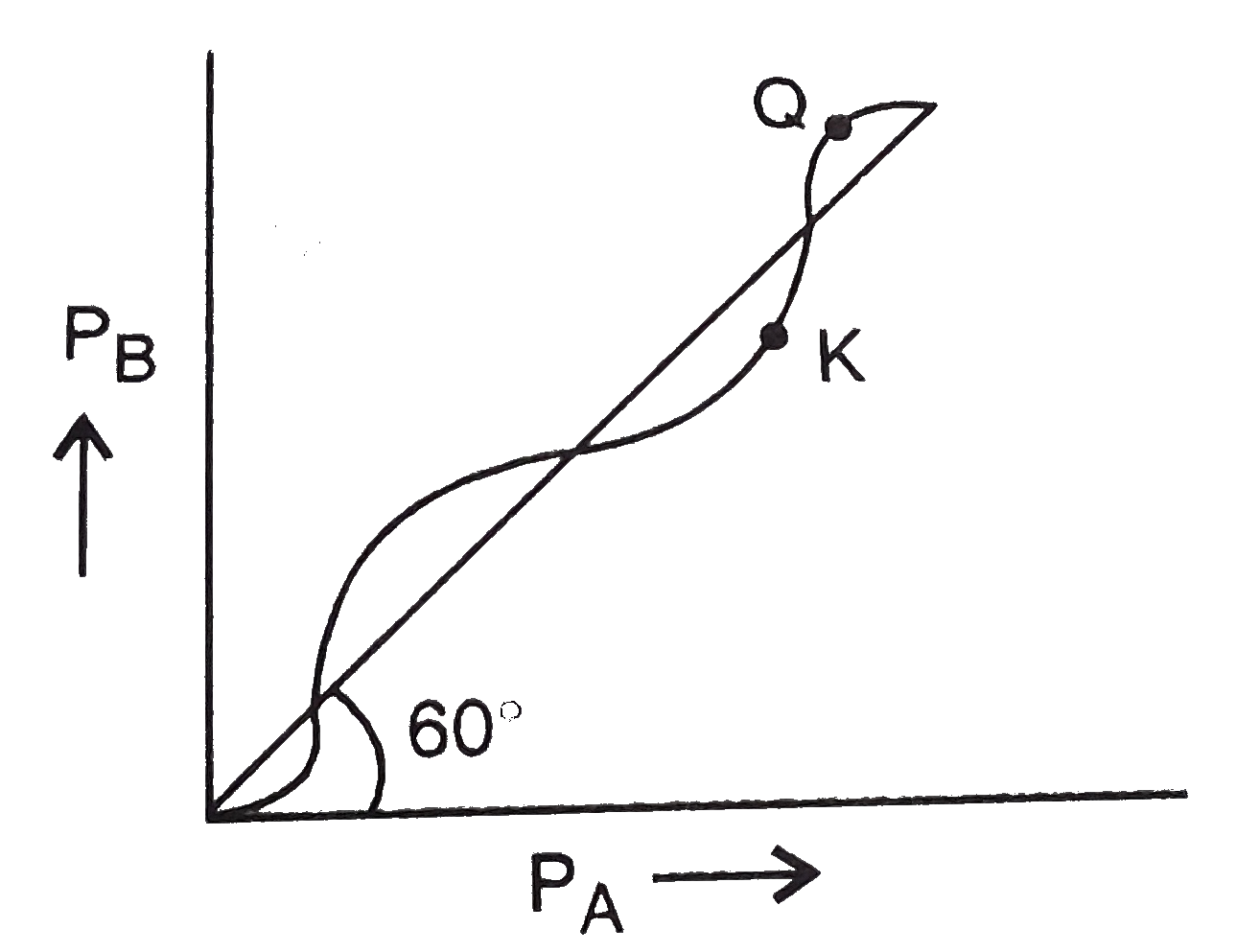
Suppose the equilibrium system
N2O4(g)⇔2NO2(g)
N2O4(g) is in a cylinder fitted with a movable piston . Which of the following statements is correct ?AIf piston is pushed downwards at constant temperature, Qc>Kc and the direction shifts in the left direction.BIf pistaon is pushed downwards at constant temperature Qc>Kc and the reaction shifts in the right direction.CIf piston is released at constant temperature , Qc>Kc and the reaction shifts in the left direction.DIf piston is released at a constant temperature, and the reaction shifts in the right direction.
The reaction which is in dynamic equilibrium, ensured us, that the reaction is reversible . But if that the reaction is in equilibrium. The reaction quotient predict either the reversible reaction is in equilibrium or tries to achieve equilibrium. In those reactions which have not achieved equilibrium, we obtain reaction quotient Qc in place of equilibrium constant (Kc) by substituting the concentration of reactant and product at the time, at whih we have to calculate the value of Qc . To determine the direction at which the net reaction will proceed to achieve equilibrium, we compare values of Qc and Kc. The three possible cases are shown as comparison of Kc and Qc in the following figures.
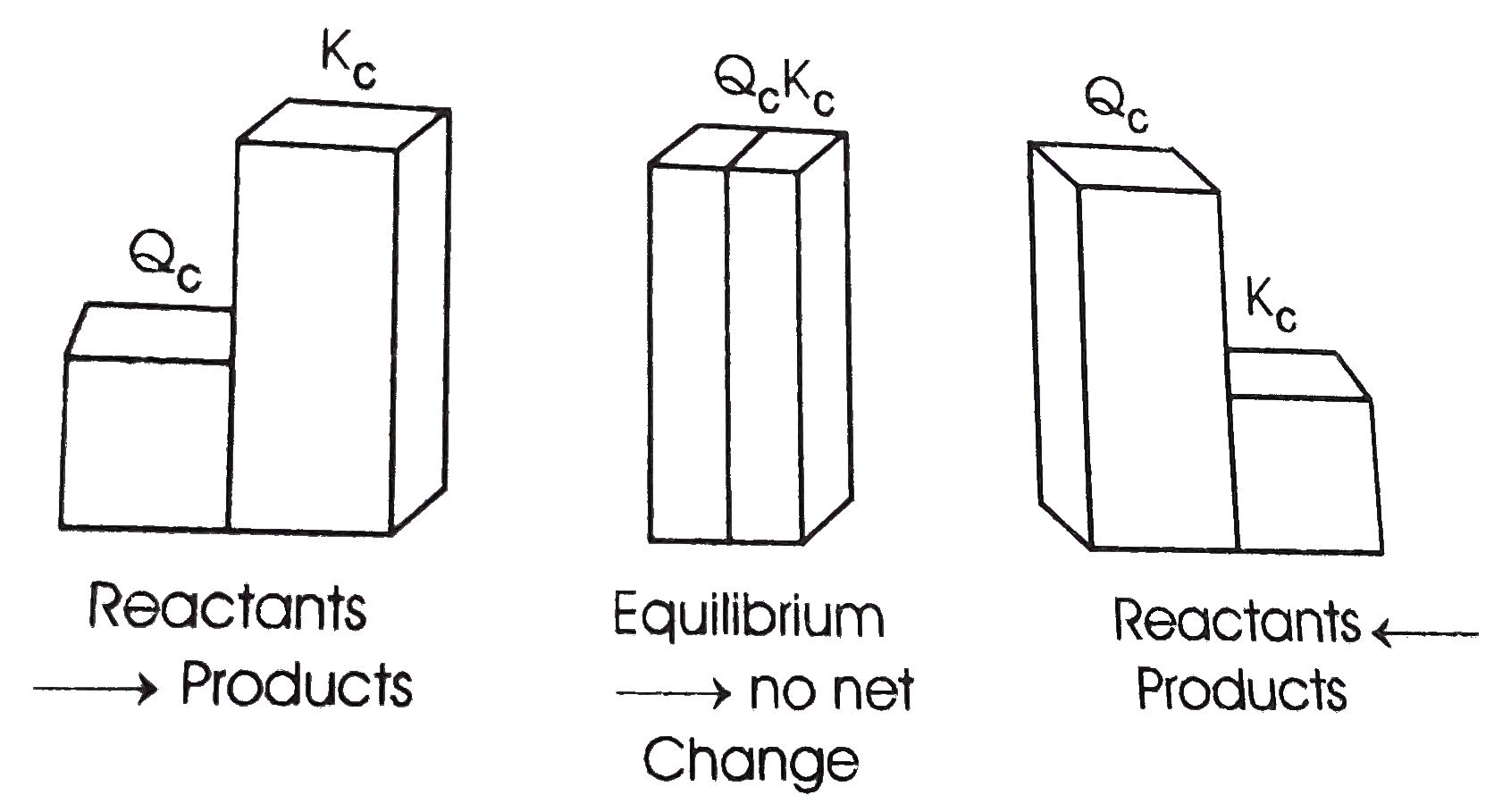
Change in Gibbs free energy, i.e., ΔG is the driving force of any reaction.
For spontaneous reaction , ΔG=−ve
For non-spontaneous reaction , ΔG=+ve
For reaction at equilibrium , ΔG=0
Thermodynamically, we know that
ΔG=ΔG∘+RTlnQ, where Q is reaction quotient and ΔG∘= change in Gibbs energy at standard condition.
For equilibrium A(g)⇔B(g)(Keq=1.732) If the pressure of the system [varied by introducing a stream of A(g) and B (g) is represented by the curve at constant temperature T.
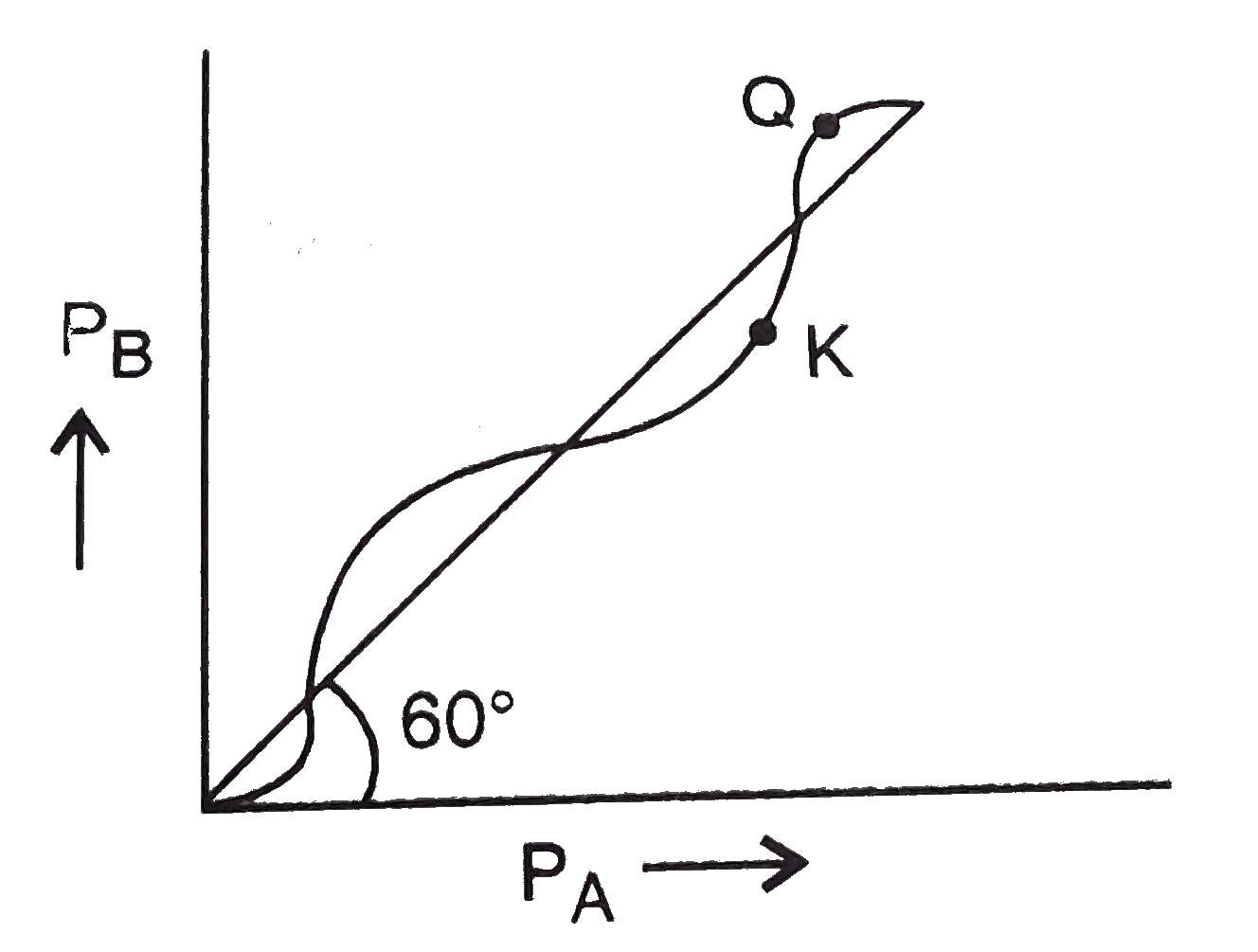
If the gaseous substances A,B,C, be in equilibrium as under :
B(g)⇐⇒A(g)10%60%
B(g)⇐⇒C(g)10%30%
then which of the following is the correct order of stability of A,B, and C in the equilibrium mixture ?
View SolutionThe reaction which is in dynamic equilibrium, ensured us, that the reaction is reversible . But if that the reaction is in equilibrium. The reaction quotient predict either the reversible reaction is in equilibrium or tries to achieve equilibrium. In those reactions which have not achieved equilibrium, we obtain reaction quotient Qc in place of equilibrium constant (Kc) by substituting the concentration of reactant and product at the time, at whih we have to calculate the value of Qc . To determine the direction at which the net reaction will proceed to achieve equilibrium, we compare values of Qc and Kc. The three possible cases are shown as comparison of Kc and Qc in the following figures.
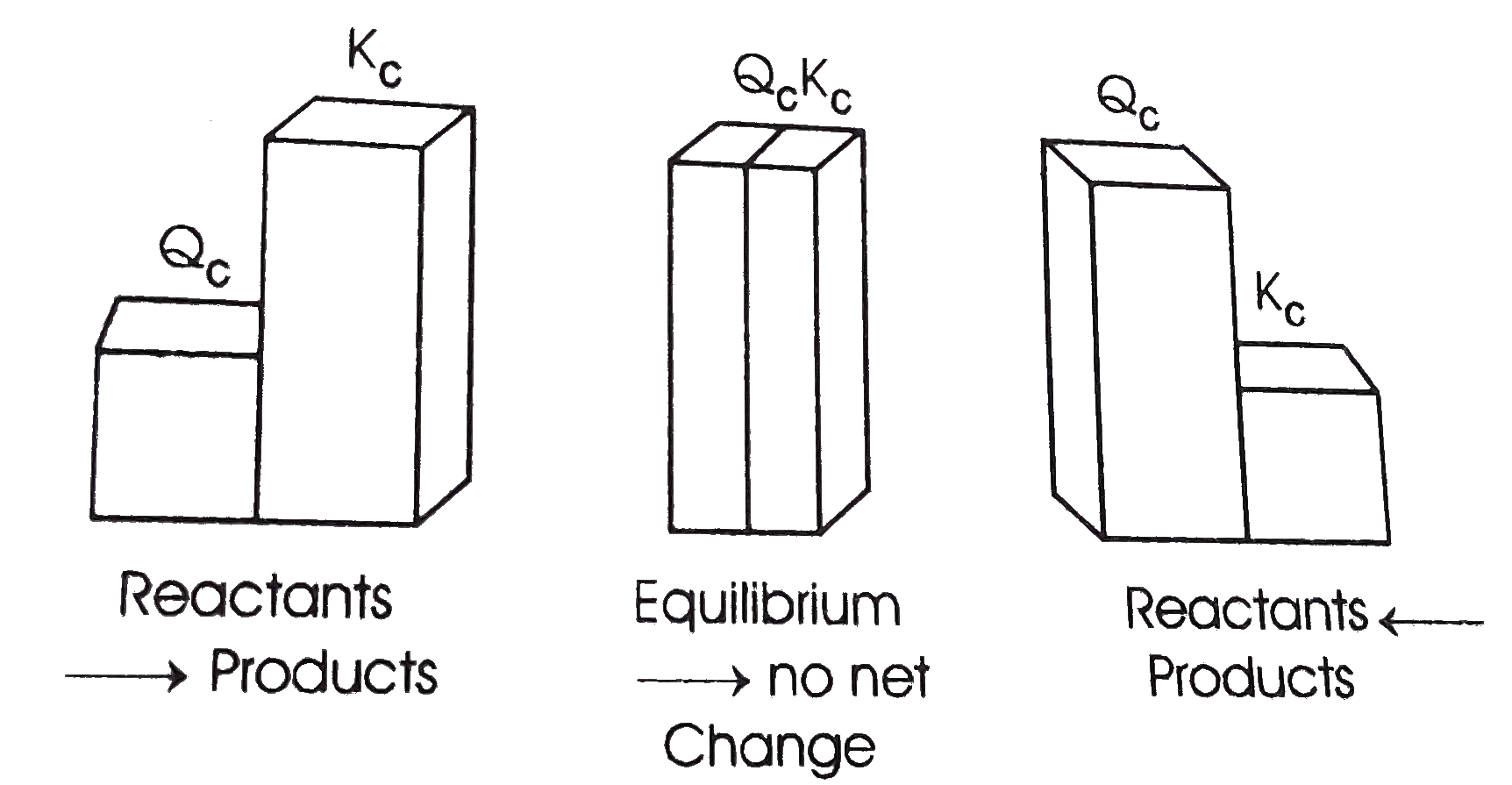
Change in Gibbs free energy, i.e., ΔG is the driving force of any reaction.
For spontaneous reaction , ΔG=−ve
For non-spontaneous reaction , ΔG=+ve
For reaction at equilibrium , ΔG=0
Thermodynamically, we know that
ΔG=ΔG∘+RTlnQ, where Q is reaction quotient and ΔG∘= change in Gibbs energy at standard condition.
For equilibrium A(g)⇔B(g)(Keq=1.732) If the pressure of the system [varied by introducing a stream of A(g) and B (g) is represented by the curve at constant temperature T.
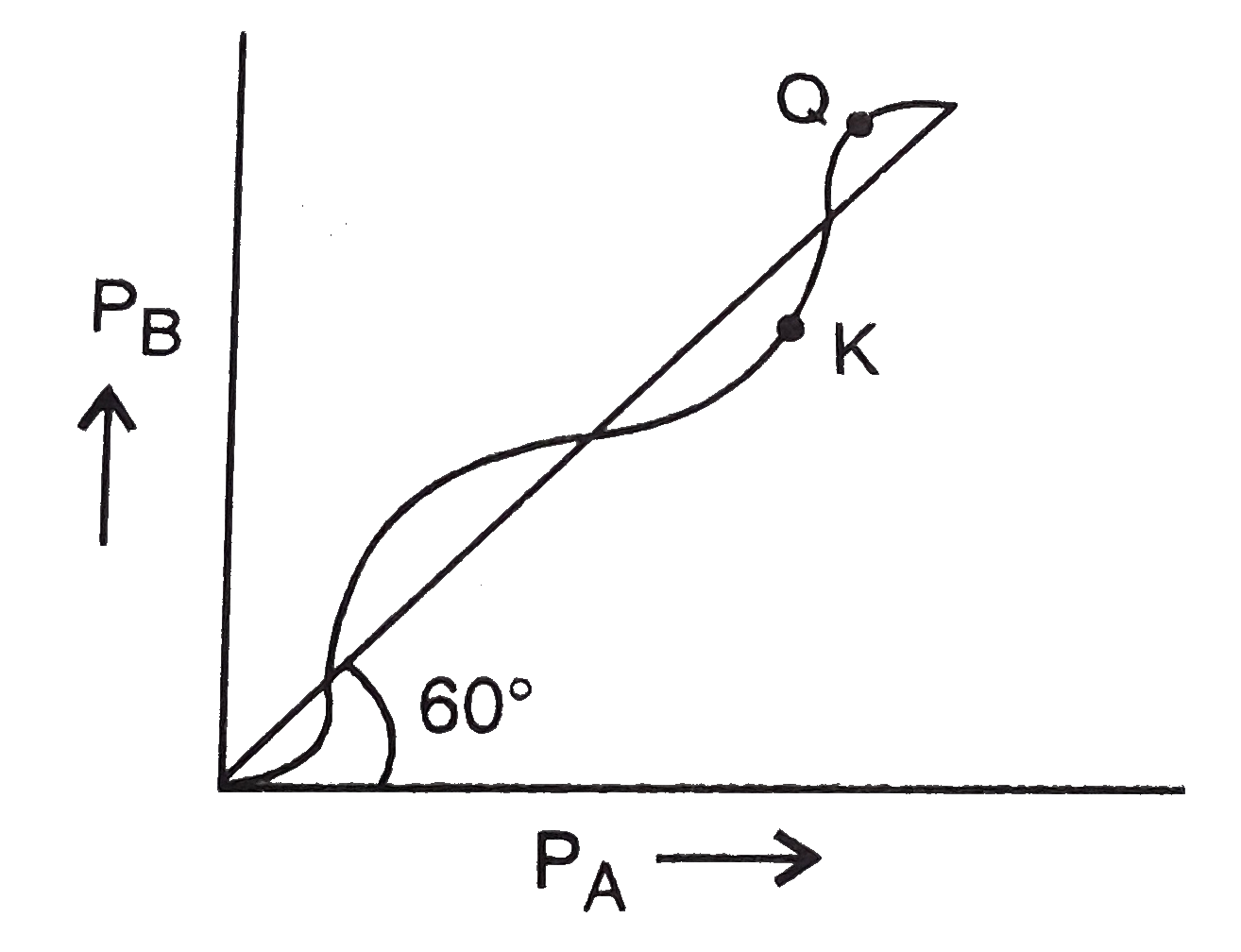
For equilibrium system
N2O4(g)⇔2NO2(g)
N2O4(g) is in a cylinder which is fitted with movable piston. Assume that equilibrium partial pressure of N2O4(g) and NO2(g) are 10 and 14 atmospheres respectively. If the piston of the cylinder is pulled out in such way so that volume of the system than what will be the value of equilibrium partial pressure of the NO2 gas ?
View SolutionThe reaction which is in dynamic equilibrium, ensured us, that the reaction is reversible . But if that the reaction is in equilibrium. The reaction quotient predict either the reversible reaction is in equilibrium or tries to achieve equilibrium. In those reactions which have not achieved equilibrium, we obtain reaction quotient Qc in place of equilibrium constant (Kc) by substituting the concentration of reactant and product at the time, at whih we have to calculate the value of Qc . To determine the direction at which the net reaction will proceed to achieve equilibrium, we compare values of Qc and Kc. The three possible cases are shown as comparison of Kc and Qc in the following figures.

Change in Gibbs free energy, i.e., ΔG is the driving force of any reaction.
For spontaneous reaction , ΔG=−ve
For non-spontaneous reaction , ΔG=+ve
For reaction at equilibrium , ΔG=0
Thermodynamically, we know that
ΔG=ΔG∘+RTlnQ, where Q is reaction quotient and ΔG∘= change in Gibbs energy at standard condition.
For equilibrium A(g)⇔B(g)(Keq=1.732) If the pressure of the system [varied by introducing a stream of A(g) and B (g) is represented by the curve at constant temperature T.
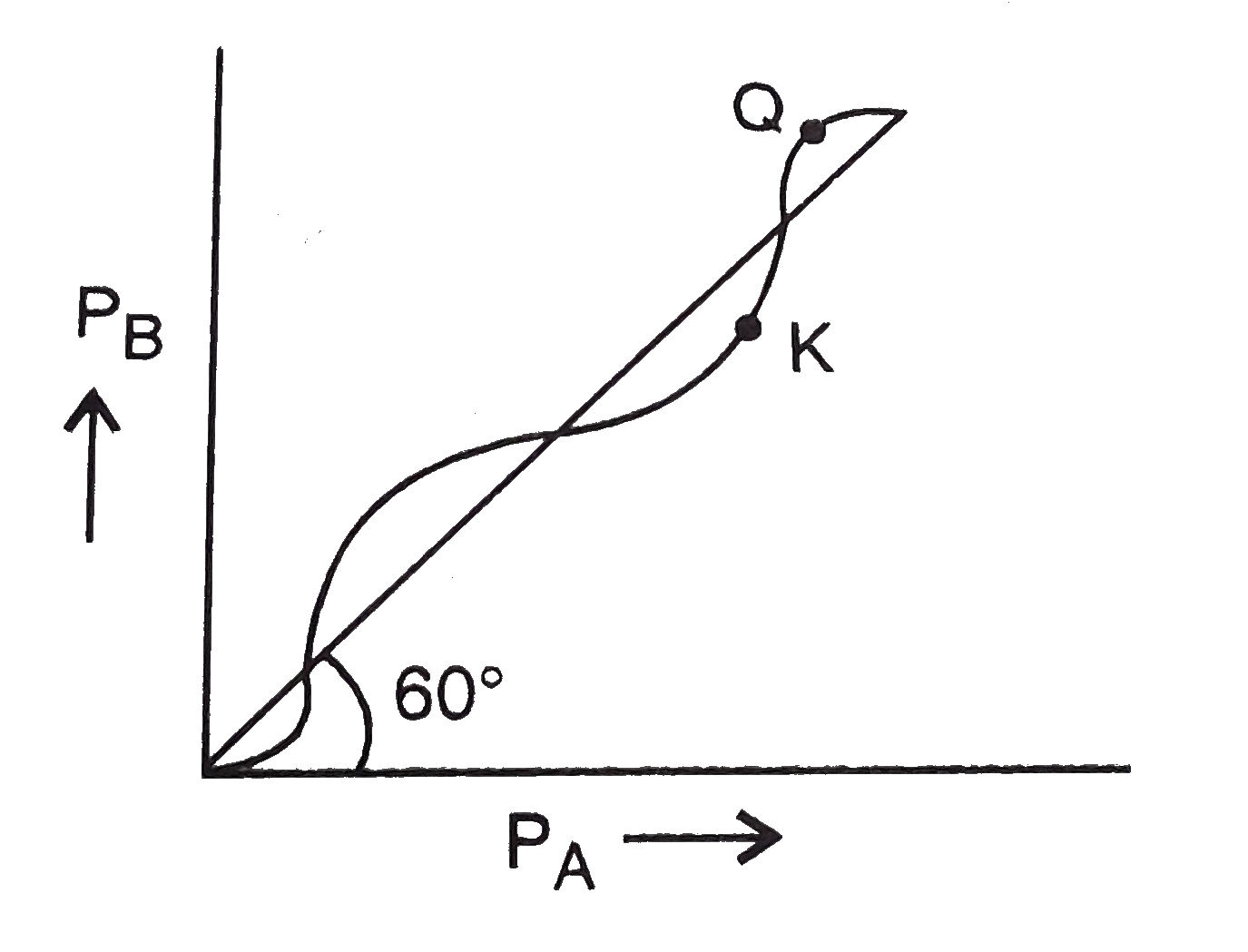
Suppose N2O4(g) is enclosed in a cylinder fitted with a movable piston which attains the following equilibrium
N2O4)(g)⇔2NO2(g)
Given that for the 10 atmosphere pressure of the equilibrium mixture, the content of NO2 is 8×15 ppm. if the piston of cylinder is moved upward in such a manner so that the volume of the gaseous mixture becomes double, then what will be new ppm of NO2(g) in the cylinder ? ( Assuming that the temperature of the cylinder remains constant )
View SolutionThe reaction quotient (Q) at equilibrium is
View SolutionA reaction with reaction quotient Qc and equilibrium constant Kc, will proceed in the direction of the products when-
View Solution
